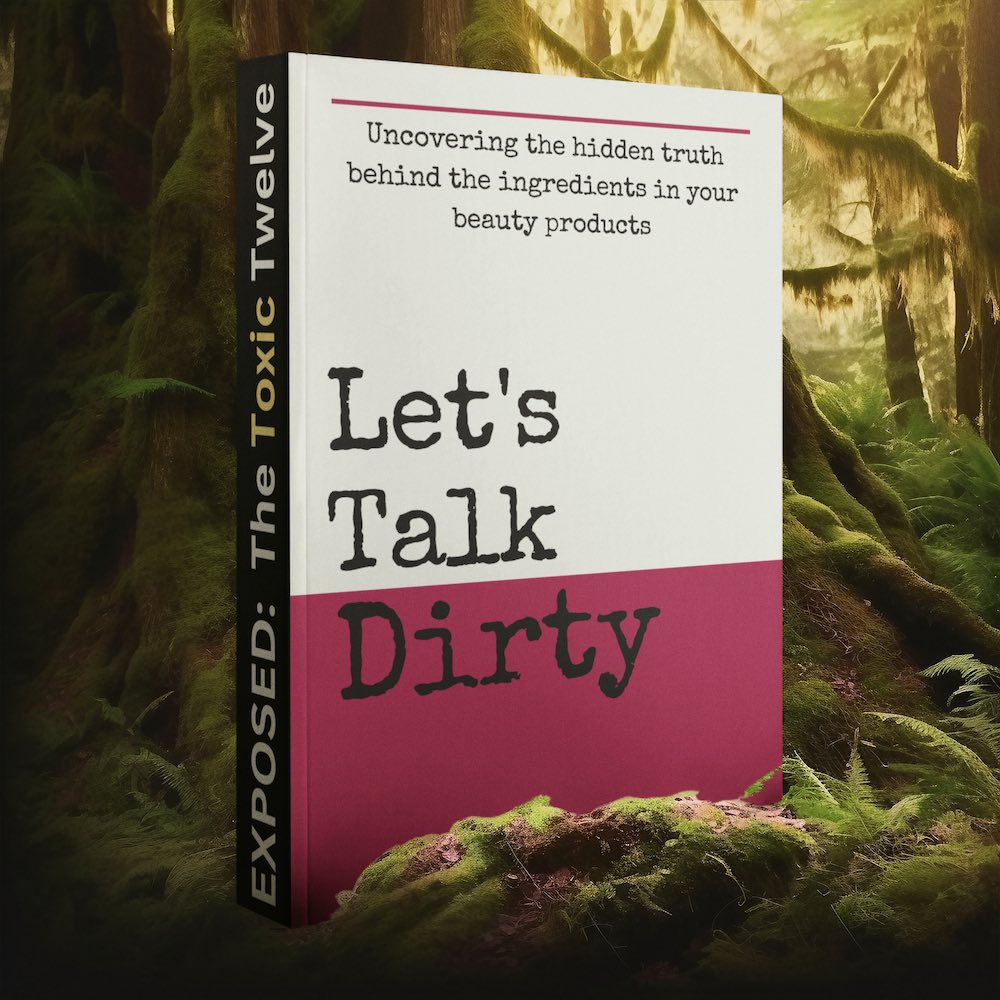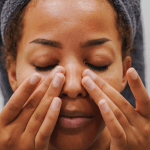Introduction to Cosmetic Chemical Concerns
Strolling through the beauty aisles, consumers are bombarded with products that vow to enhance beauty and improve personal care. From moisturizers that claim to defy aging to shampoos that promise the perfect shine, the allure of these products is undeniable. However, beneath the surface of these enticing promises lies a less glamorous truth: many of these products contain chemicals that pose potential health risks.
Prevalence of hazardous chemicals in cosmetics
The term “cosmetic” encompasses a wide range of personal care items, including deodorants, perfumes, lotions, and makeup. Unlike drugs, these products are not subject to stringent federal regulation, leaving safety largely in the hands of manufacturers. A myriad of chemicals are added to cosmetics for various purposes, such as UV filters for sun protection and phthalates for fragrance enhancement. However, not all chemicals are disclosed on labels, making it challenging for consumers to avoid exposure to endocrine-disrupting chemicals (EDCs) that can interfere with the body’s hormonal functions.
Specific risks for college-age women
College-age women are particularly vulnerable as they are among the highest users of cosmetic products. Studies have shown that young women use an average of eight personal care products daily, with some reporting up to 17 different items. This high usage correlates with increased exposure to EDCs, which can lead to reproductive health issues such as endometriosis and fertility problems. Alarmingly, 80% of women in this demographic are unaware of the chemical contents in their cosmetics, heightening their risk.
The gap in awareness and affordability of safer alternatives
While safer, EDC-free cosmetic alternatives exist, they often come with a higher price tag, making them less accessible to the average college student. This economic barrier perpetuates a cycle of exposure among those who cannot afford the more expensive options. Moreover, the lack of awareness about the potential dangers of conventional cosmetics further widens the gap, leaving many young women at risk. It is imperative to bridge this gap through education and advocacy for more affordable, safer personal care products.

Do you have the most commonly used but toxic, disease bringing chemicals in your skin care? Many chemicals in skincare are hormone disruptors and make menopause symptoms worse.
Find out more…
Understanding Endocrine-Disrupting Chemicals (EDCs)
Definition and examples of EDCs in cosmetics
Endocrine-disrupting chemicals (EDCs) are substances that can interfere with the hormonal systems at certain doses. These disruptions can cause cancerous tumors, birth defects, and other developmental disorders. Specifically, in cosmetics, EDCs can mimic naturally produced hormones or block hormone receptors. Common examples of EDCs found in cosmetics include phthalates (used to enhance fragrance), parabens (used for their antimicrobial properties), triclosan (found in toothpastes and soaps), and UV filters like oxybenzone (present in sunscreens and lotions).
Mechanisms of EDCs on the endocrine system
EDCs can exert their effects on the endocrine system through various mechanisms. They may mimic the action of a naturally occurring hormone, such as estrogen or testosterone, thereby tricking the body into over-responding or responding at inappropriate times. They can also block the effects of hormones in parts of the body that normally respond to them, or alter the synthesis and breakdown of natural hormones, which can affect their normal circulation patterns.
Common products containing EDCs
- Perfumes and colognes (phthalates)
- Moisturizers and lotions (parabens, UV filters)
- Sunscreens (oxybenzone)
- Antibacterial soaps and toothpastes (triclosan)
- Makeup products like lipsticks and mascaras (various EDCs)
Challenges in identifying and avoiding EDCs
One of the primary challenges in avoiding EDCs is the lack of full disclosure on product labels. Not all chemicals are listed, and some may be hidden under the term “fragrance.” Additionally, the complexity of chemical names can make it difficult for consumers to recognize harmful ingredients. There is also a lack of regulation in many countries regarding the use of these chemicals in consumer products. Moreover, the ubiquity of EDCs in a wide range of products makes it challenging for individuals to avoid them entirely without significant lifestyle changes.
Health Implications of Chemical Exposure
Reproductive Health Concerns
The allure of cosmetics is often overshadowed by the presence of hazardous chemicals that pose significant risks to reproductive health. Endocrine-disrupting chemicals (EDCs) such as phthalates, parabens, and triclosan, found in many personal care products, can lead to abnormal hormone production and reproductive disorders. For college-age women, the implications are profound, as these are the formative years for their reproductive systems. Studies have linked EDC exposure to conditions like poor sperm quality, miscarriage, and endometriosis, which can not only cause pain but also significantly impact fertility.
Impact on Fetal Growth and Infant Development
Chemicals in cosmetics do not only affect the individual using them but can also have intergenerational consequences. Pregnant women exposed to EDCs may unknowingly affect their unborn child’s development. Research has shown a 25% increase in the odds of low birth weight in infants when mothers are exposed to multiple types of EDCs. This underscores the critical need for awareness and regulation of cosmetic ingredients to protect the most vulnerable.
Neurological and Cardiovascular Risks
Beyond reproductive concerns, EDCs in cosmetics have been associated with a range of neurological and cardiovascular conditions. Exposure to these chemicals has been linked to attention-deficit/hyperactivity disorder (ADHD), cognitive impairment, and depression. Cardiovascular risks are not to be underestimated either, with studies connecting EDC exposure to high blood pressure, insulin resistance, and coronary heart disease. The complexity of these health issues highlights the systemic impact of cosmetic chemicals on overall well-being.
Case Studies and Research Findings
Empirical evidence continues to build a compelling case against the use of harmful chemicals in cosmetics. A study involving women aged 18-44 in Utah and California found that increased exposure to phthalates doubled the odds of developing endometriosis. Furthermore, a significant drop in urinary concentrations of these chemicals was observed in adolescent girls who ceased using EDC-containing products, plummeting by as much as 45%. These findings not only validate concerns over chemical exposure but also demonstrate the potential for recovery upon reducing contact with these substances.
As regulatory bodies begin to recognize the dangers, states like Washington, New York, California, Minnesota, and Maine have initiated bans on certain harmful chemicals in cosmetics. These legislative actions, backed by scientific research, pave the way for a safer future where the beauty routines of college-age women do not come at the cost of their health.

Feeling You Have a Right to Safe Beauty & Fem Care?
If so, it may be time for a change. It starts with knowledge. We have a few suggestions in our new guides.
Regulatory Landscape and Consumer Safety
Comparison of Cosmetic Regulation in the US and EU
The regulatory frameworks governing cosmetics in the United States and the European Union differ significantly. In the EU, a precautionary principle prevails, leading to stringent regulations and the prohibition of over 1,300 chemicals in cosmetics. Conversely, the US has banned or restricted only approximately 11 substances for cosmetic use. The EU’s Regulation (EC) No 1223/2009 on cosmetic products mandates safety assessments and pre-market notification, while in the US, the Food and Drug Administration (FDA) does not require pre-market approval for cosmetics, leaving safety substantiation largely to the discretion of manufacturers.
Role of the FDA and Gaps in Regulation
The FDA’s oversight of cosmetics under the Federal Food, Drug, and Cosmetic Act (FD&C Act) is limited. Unlike drugs, cosmetic products and ingredients do not need FDA pre-market approval, with the exception of color additives. The FDA can only take action against cosmetics on the market if there is evidence of harm to consumers, which places the onus on the agency to prove that a product is unsafe. This reactive rather than proactive approach creates gaps in consumer safety, as potentially hazardous ingredients may already be widely used before any action is taken.
State-level Actions and Bans on Harmful Chemicals
Due to federal regulatory gaps, several states have taken the initiative to protect consumers from harmful chemicals in cosmetics. For instance, California has enacted the Safe Cosmetics Act, requiring companies to disclose ingredients linked to cancer or reproductive harm. Washington state has passed legislation banning certain chemicals, including PFAS, in cosmetics starting in 2025. These state-level actions, while commendable, create a patchwork of regulations that can be confusing for both consumers and manufacturers.
The Need for National Policy Reform
There is a growing consensus among public health experts, environmental advocates, and informed consumers that national policy reform is necessary to ensure the safety of cosmetic products. Advocates argue for a more robust regulatory framework similar to the EU’s, which would include mandatory safety testing, full ingredient disclosure, and a precautionary approach to chemical usage. Such reforms would not only protect consumers but also level the playing field for companies, as all would be held to the same high standards of safety and transparency.
In conclusion, while the beauty industry continues to flourish, the regulatory landscape in the US remains less stringent than in the EU, posing potential risks to consumer safety. State-level actions are a step in the right direction, but comprehensive national policy reform is needed to adequately safeguard the health of all consumers, particularly vulnerable populations such as college-age women.
Do you know the three main ways that your body gets in touch with harmful chemicals with everyday products? Knowledge is Power!
The Ultimate Detox Guide will tell you how to lower your exposure to harmful chemicals!

Personal Care Product Usage Among College-Age Women
Statistics on Cosmetic Product Usage
Recent research indicates that college-age women utilize cosmetic products more frequently than other demographic groups. On average, these young women use eight different personal care products daily, with some reporting usage of up to 17 distinct items. This extensive use of cosmetics is significant, considering the potential exposure to harmful chemicals they may contain.
Link Between Product Usage and Chemical Exposure
The link between the number of products used and the level of exposure to endocrine-disrupting chemicals (EDCs) is well-established. Products such as perfumes, lotions, and makeup often contain EDCs like phthalates, parabens, and PFAS, which can be absorbed through the skin or inhaled. The more products a woman uses, the greater her potential exposure to these chemicals, which can have adverse effects on reproductive health.
Awareness Levels of Chemical Risks in Cosmetics
Despite the risks, awareness among college-age women regarding the chemical content of cosmetics is low. A staggering 80% of women surveyed were unaware of whether their personal care products contained harmful chemicals. This lack of knowledge underscores the need for better education on the potential health risks associated with cosmetic use.
Case Study: Impact of Discontinuing EDC-Containing Products
A revealing case study showed that when adolescent girls ceased using products laden with EDCs, the concentration of these chemicals in their urine decreased by up to 45%. This significant reduction highlights the direct impact that product choice can have on reducing chemical exposure. It also emphasizes the potential benefits of switching to safer, EDC-free alternatives, despite the often higher cost associated with these products.
In conclusion, the widespread use of personal care products by college-age women, coupled with a lack of awareness and the economic barriers to safer alternatives, presents a complex challenge. It is imperative to address these issues through education, regulatory reform, and the development of affordable, safe cosmetic options.

Doubting chemicals in skincare and femcare? Well done! Choose chemical-free products whenever possible.
The Economic Divide in Cosmetic Safety
Cost Comparison of EDC-Free Products Versus Conventional Cosmetics
The quest for beauty often comes with a hidden price tag that extends beyond the shelf price: the cost to one’s health. Endocrine-disrupting chemicals (EDCs) are prevalent in many conventional cosmetic products, and while EDC-free alternatives exist, they often come at a premium. A comparison of costs reveals that organic or natural cosmetics, which typically exclude harmful chemicals, can be significantly more expensive than their conventional counterparts. This price disparity is not just a matter of cents but can amount to a substantial financial burden for consumers, especially for college-age women who may have limited budgets.
Economic Barriers to Safer Product Access
Access to safer cosmetic options is not solely a matter of availability but also affordability. The economic barriers are real: for students and young adults, who may be juggling tuition fees, housing costs, and other expenses, the higher cost of safer products can be prohibitive. This economic constraint forces many to continue using less expensive, chemical-laden products, inadvertently exposing themselves to potential reproductive health risks.
The Role of Socioeconomic Status in Exposure Risk
Socioeconomic status plays a critical role in exposure to harmful chemicals in cosmetics. Women from lower-income backgrounds are more likely to purchase cheaper beauty products, which, due to lax regulations, may contain higher levels of EDCs. This disparity in exposure risk is a stark example of environmental injustice, where the burden of chemical exposure falls disproportionately on those with fewer resources.
Strategies for Making Safer Products More Accessible
- Education and Awareness: Increasing awareness about the risks of EDCs in cosmetics can empower consumers to make informed choices. Educational campaigns on campuses and social media can highlight affordable EDC-free options.
- Subsidies and Incentives: Financial incentives for manufacturers to produce safer, more affordable products could help bridge the cost gap. Subsidies or tax breaks could be offered to companies that prioritize consumer health.
- Regulatory Reforms: Stricter regulations on cosmetic ingredients would level the playing field, ensuring that all products on the market meet safety standards, thus making safer options the norm rather than the exception.
- Group Purchasing: College communities could leverage collective buying power through group purchasing programs, negotiating discounts on safer products for students.
In conclusion, the economic divide in cosmetic safety is a significant barrier to protecting the reproductive health of college-age women. By addressing the cost and accessibility of safer products, we can work towards a future where beauty does not come at the expense of health.
Moving Forward: Education, Regulation, and Innovation
Educational Initiatives for Risk Awareness
Education is a cornerstone in the fight against the harmful effects of chemicals in cosmetics on reproductive health. Initiatives aimed at increasing risk awareness among college-age women are crucial. These initiatives can take the form of campus-based workshops, online courses, and inclusion of this topic in health education curricula. By leveraging social media platforms and influencer partnerships, messages about the dangers of certain cosmetic ingredients can reach a wider audience. Furthermore, educational programs should not only inform about risks but also empower women to read and understand product labels, discern marketing claims, and make informed choices.
Advocacy for Stricter Regulations and Bans
Advocacy plays a pivotal role in driving policy change. Activists, non-profit organizations, and concerned citizens can lobby for stricter regulations on the use of endocrine-disrupting chemicals (EDCs) in personal care products. This includes pushing for comprehensive testing of new and existing chemicals, full disclosure of all ingredients, and a ban on the most harmful substances. Advocacy efforts can also support state-level actions to ban certain chemicals, which can create momentum for national policy reform. Collaborative efforts with scientists and legal experts can strengthen the case for regulatory overhaul.
Innovations in Safer Cosmetic Formulations
The cosmetic industry must innovate to create safer products that do not compromise women’s reproductive health. This involves investing in research and development of alternative ingredients that are free from EDCs. Brands that prioritize safety and transparency can set new industry standards and gain consumer trust. The development of green chemistry and the adoption of the precautionary principle in product formulation can lead to the emergence of products that are both effective and non-toxic. Recognition and certification of safe products can also guide consumers towards healthier choices.
The Role of Consumers in Driving Change
Consumers have immense power to influence the market. By choosing to purchase products free from harmful chemicals, they can drive demand for safer alternatives. College-age women, in particular, can lead this change by educating their peers and advocating for campus-wide commitments to non-toxic products. Consumer demand for transparency can also pressure companies to disclose full ingredient lists and avoid misleading claims. Through collective action, such as petitions and social media campaigns, consumers can amplify their voice and demand industry-wide changes.
In conclusion, the journey towards safer cosmetics requires a multifaceted approach that includes education, regulation, and innovation. By raising awareness, advocating for stricter policies, embracing safer product formulations, and harnessing consumer power, we can protect the reproductive health of college-age women and future generations.









